Artist V.G. Venugopal born in 1976, Valakkunja, Kasaragod Distrist in India is a Bangalore based visual artist. He completed a BFA in Painting from Chamarajendra Academy of Visual Arts, Mysore and then decided to go for an MFA in Printmaking from Chitrakala Institute of Advanced Studies, Bangalore. His art practice during the last two decades includes drawing, painting, printmaking, installations, video, animation etc. His works speak about the complexities of the multi-layered urban living, issues of identity, migration, changing human relationships in the present context etc. Multicultural, cosmopolitan surroundings have been the major influence for his practice in general with an emphasis on the uncertain and fragile characters of present day urban society.

Venugopal was part of the residency at Theertha International Artists Collective in Sri Lanka in 2010. He has participated in various group and solo shows and is the recipient of several awards and recognitions including the KK Hebbar Art Foundation Gold Medal in BFA from University of Mysore (1998); National Lalit Kala Akademi Scholarship, New Delhi (2000-01); Karnataka Lalithkala Academy Award (2000); National Scholarship, Department. of Culture, Government. of India, New Delhi (2001-03); H.K.Kejriwal Young Artist Award, Bangalore (2007); Printmaking Fellowship, Karnataka Lalithkala Academy, Bangalore (2010); Camel Art Foundation Award, 12th Southern Region Exhibition (2010); ‘Magmart – VII’ International Video Art Festival, Naples, Italy (2012).

What’s your artistic background?
My life as a child and when in school were spent in my native village called Valakkunja, a remote place in Kasaragod District. I had a typical childhood experience in the rural backdrop surrounded with hilly landscapes, vast paddy fields, areca nut plantations, rich with cultural and linguistic diversity. My early interests to draw and paint were encouraged in the family and at school and later guided by artist Sri P.S.Punchithaya who had set up his own art village in Kasaragod and was helping young students to pursue professional art education. That’s how I got myself enrolled for a formal training in visual arts, completed a BFA in painting from Chamarajendra Academy of Visual Arts (CAVA) under the University of Mysore and later a Masters in Printmaking from Chitrakala Parishath, Bangalore University.
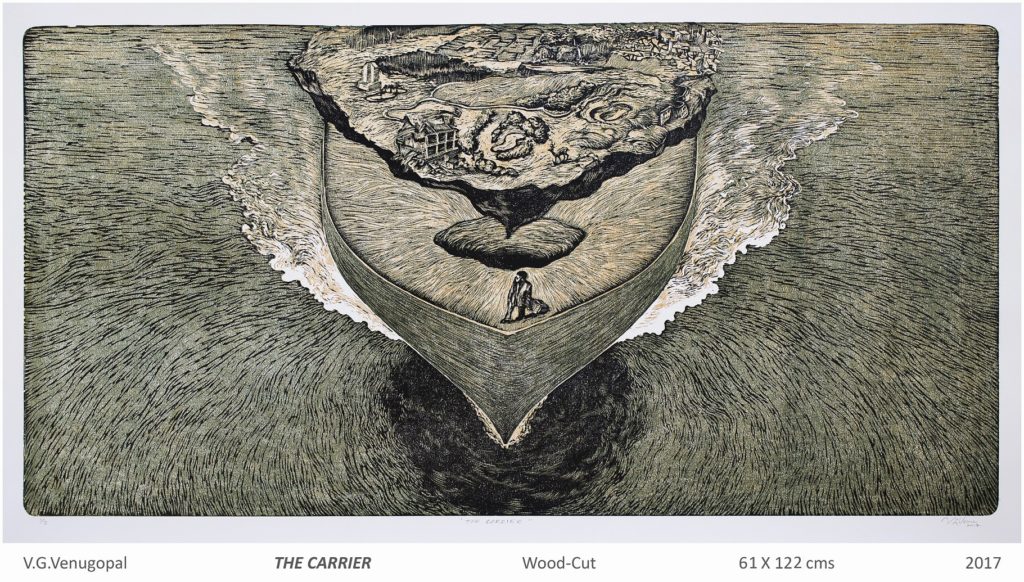
What’s integral to the work of an artist?
I believe it is very important to have a consistent practice with an undeterred focus and determination to succeed; there are no short-cuts in developing the required skills, a visual language to express. It is also very important to understand and try to engage ourselves with people, society and the world on the whole which naturally reflects in our practice and expression.
What role does the artist have in society?
For me art is a reflection of society and the time and place we live-in. As Picasso once famously said, ‘…If a work of art cannot live always in the present it must not be considered at all’. When an artistic expression engages with contemporary society and time, it will be more relevant and have long-lasting impressions in history. It may also have the strength to influence society just like any great work of literature, music or theatre does.
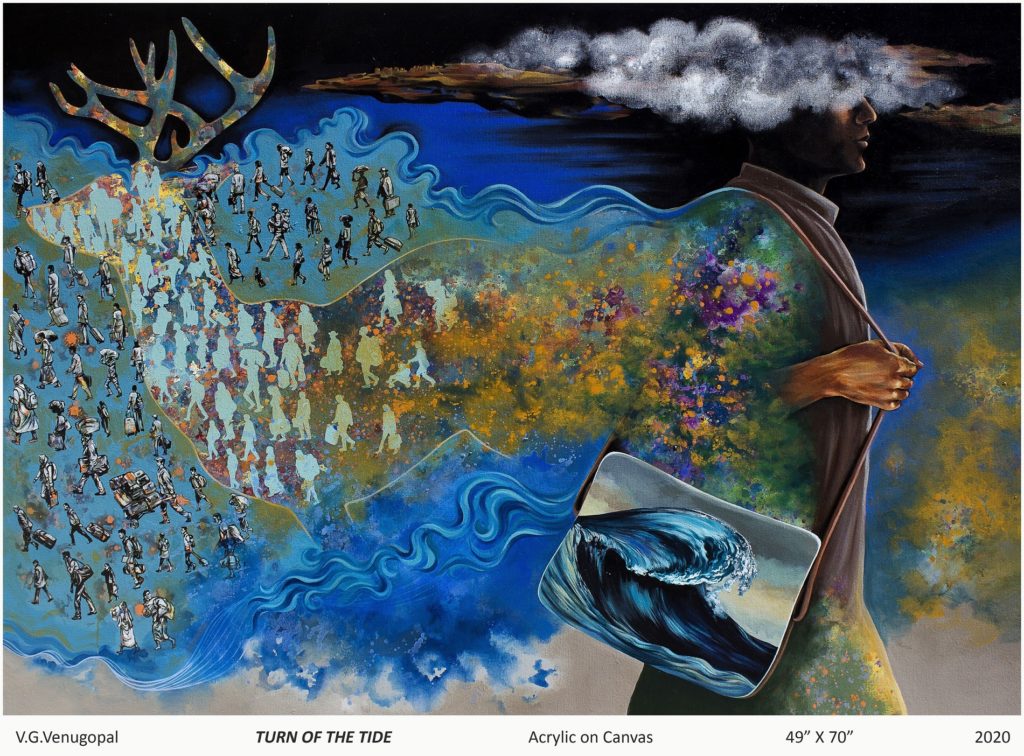
What art do you most identify with?
As a multidisciplinary artist, I have been exploring mediums like Drawing, Painting, Printmaking, Illustrations, Video Art and Installations over the years. I also keep changing my mediums depending on the subject’s demand and also the instincts. Personally I enjoy working with watercolors and mediums of Printmaking like Woodcut and Etchings. I am also very much inclined to explore drawing based videos using stop-motion technique.

What themes do you pursue?
I have been a figurative artist all these years of my practice. My works are largely developed from my experiences and observations of the urban spaces and my perceptions of the issues associated with it. My recent works are attempts of a critical engagement with the place and time we live-in; my evolving alternative approaches in dealing with questions I ask myself about changing facets of human relations and sensibilities, issues related to displacement, migration and struggle for identity in the present context. The images are caught between complex situations and dilemmas of reality. My figuration portrays a fictitious world by an interpretation of everyday reality and nurtures the fragile feelings of human emotions to construct meaningful imagery from the lived reality. Along with the seen, I have tried to mingle/mix/combine intangible aspects of my surroundings. I use metaphors, variations in scale and repetition as the devices to achieve the desired results.
What’s your favourite art work?
Since my early student days, a number of artists, great masters have influenced me and continue to inspire in every stages of the career. It is hard to pick a single artwork as a favourite work. Whether it is the inspiration from the impressionists or Bengal revivalists during my early student days, the enigmatic woodcut prints of far-east or the spontaneity of expressionists, they all have their share of influence. I always admired the western masters like Rembrandt, Klimt, Van Gogh, Edward Hopper, Rene Magritte, Lucian Freud, William Kentridge and some of the most influential Indian greats are Abanindranath Tagore, Bikash Bhattacharya, Gulam Mohammed Sheikh, K.G.Subramanyan, Sudhir Patwardhan, Anupam Sud and many more..!
Describe a real-life situation that inspired you?
Being born and lived my early life in a rural space, relocating myself to an urban space for the purpose of work has been always the biggest influence on me. I consider myself as a displaced individual and there are so many other people around us who shift/re-locate themselves for various reasons. As I live and work in these multi-cultural, metropolitan surroundings, the interpretation of this lived reality becomes the greatest inspiration to keep moving.
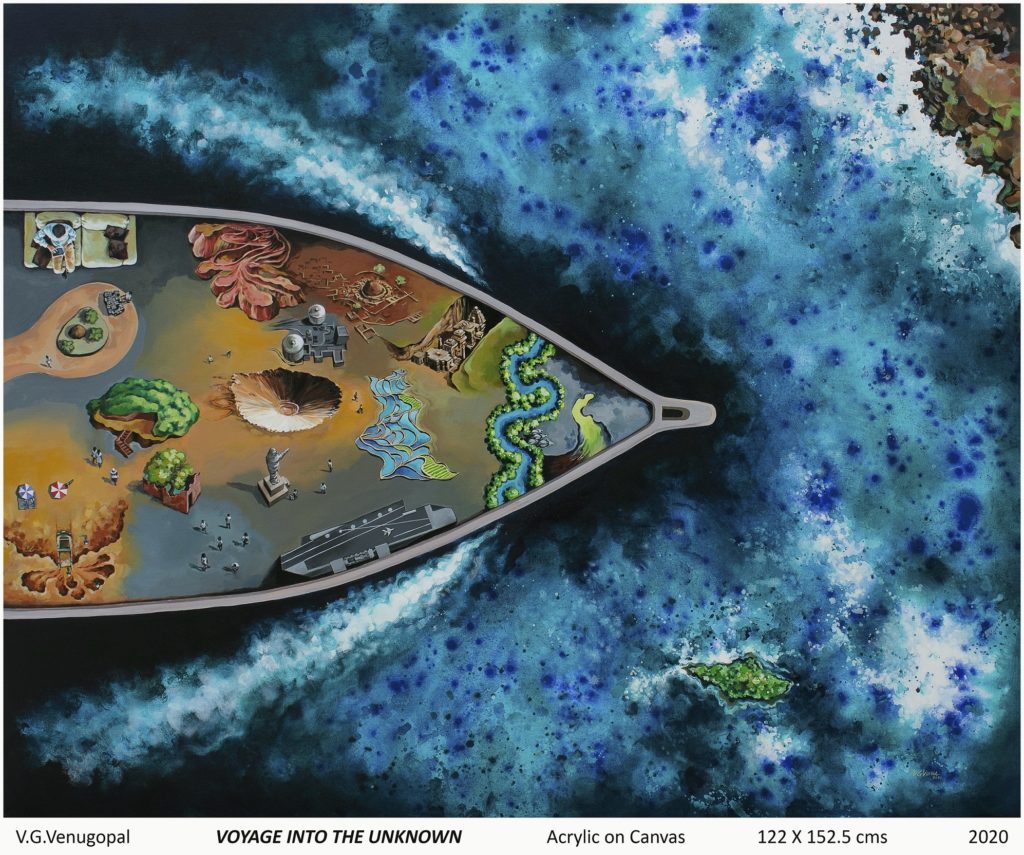
What jobs have you done other than being an artist?
During the early days of my career as an artist I have worked in an animation production firm for a short time, where I got to understand the little basics about moving images and I am able to incorporate those experiences later in my experimentations on video art. I also started teaching the students of art, design and architecture since 2006 in various institutions as a visiting faculty and still continue to do so. In addition, I have been illustrating for publications and other media as a freelancer.
Why art?
My early interests to draw and paint naturally inspired me to take up art as profession. Though in those days, I hardly knew about art as a career and it’s consequences, the journey so far made me realize it is the best choice for the one who wants to tread a path of your own. Just like any other creative space, art gives you that freedom of choice, though it’s an ‘ocean with tides’ where exploration never ends.

What is an artistic outlook on life?
Though we always live in a world of uncertainty, hope moves us forward. There is nothing called perfection in anything around us, just like the way we live. But art and creativity can fill that void created by a utopian idea.
What memorable responses have you had to your work?
Receiving a good response from the viewers/experts for all the hard work and efforts is always a satisfying experience for any artist. I had several such occasions in the form of solo shows and winning awards. The kind of positive response I got for my solo shows in 2010 and 2016; the selection for National Scholarship in 2001, H.K.Kejriwal Young Artist Award in 2007, Camlin Art Foundation Award in 2010 and making it to the Hall of Fame at Magmart International Video Art Festival at Naples, Italy in 2012 are some of the most cherished moments in my art career.

Is the artistic life lonely? What do you do to counteract it?
I feel it is both; an artist can have his/her zone whenever he/she wishes to have. Fundamentally artists cannot be lonely; we are always surrounded with either the thought process in the psychological space which is a constant companion during work or the people from various walks of life from whom we wish to hear or get responses. I have never felt difficulty in dealing with both situations.
What do you dislike about the art world?
Art world is also not free of favoritism and closed group networks. Some of the specific ecosystems operate with a certain kind of ideology and they don’t want to look beyond. There is a need for more inclusiveness and impartial minds in the system.
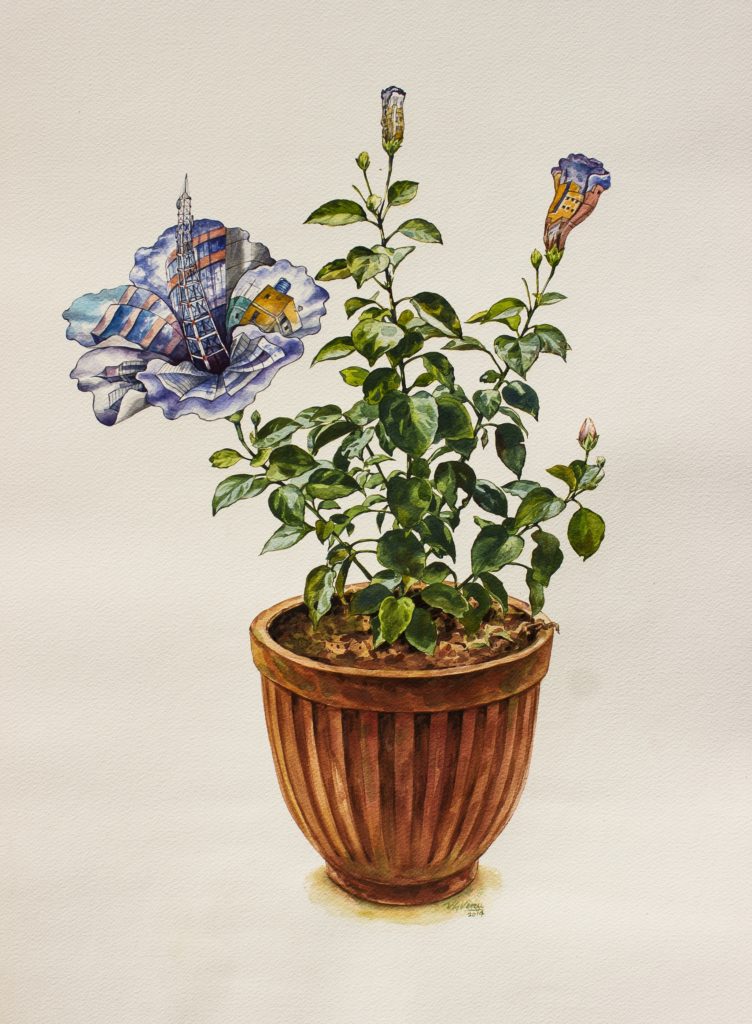
What do you dislike about your work?
At times I get a feeling that, I limit myself to certain way or thought process and there is a possibility to break away from that mental space and go beyond. Secondly, the dilemma of when to complete a specific work, because overdoing can affect the outcome of the work.
What do you like about your work?
My practice in different mediums demands a constant shift in the psychological space and I feel having the adequate skill and ability to navigate myself to those different zones are my biggest advantages.
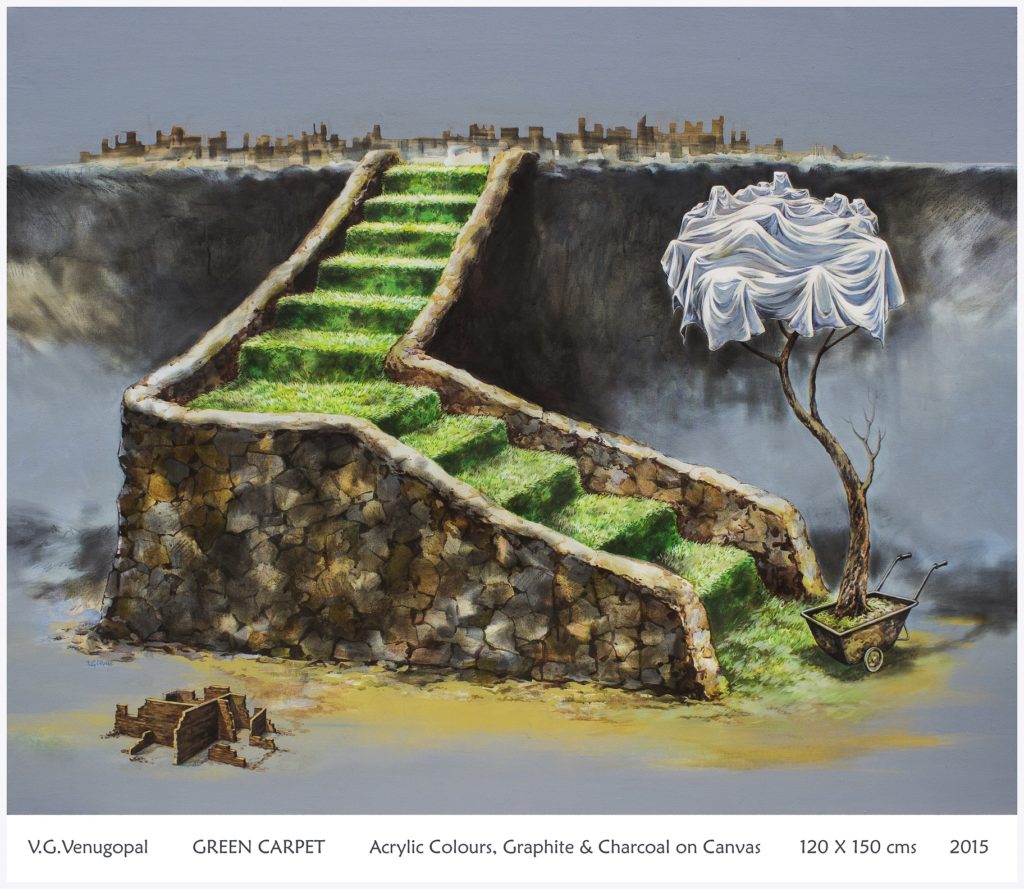
Should art be funded?
A big YES…! Art (I am not referring to only paintings or visual art here) in general is an integral part of our history and growth as a civilized society. It contributes in a big way in nation building. We need more patrons and connoisseurs for art and specifically the governments should allocate more funds to support the community along with the already existing private/corporate funding. Many European countries allot a large fund for art and culture in their budget.
What role does art funding have?
It is very important to make sure that the process and utilization of any kind of funding is transparent and properly streamlined. In many cases there is no accountability from both sides, and the works created through funding are not rightly shared in the public platforms (this happens particularly in government funded projects). I feel the private funded projects are processed and structured much better. It is also important to make sure that the works created by public funding are socially relevant.
What is your dream project?
Even though my practice involves a variety of mediums, printmaking is one of the most fascinating mediums for me. I believe that it is one of most democratic mediums which nurtures community spaces and groups. Unlike the west and far-east it has not received the recognition it deserves as an independent medium. If I get an opportunity and the support needed, I wish to set up a community space with like-minded people exclusively for the practice of printmaking where artists can share their ideas and work together.

Name three artists you’d like to be compared to.
I don’t think it’s fair to compare myself with any artist I admire and look up to for inspiration. Every artist has his/her own identity in their making as an individual and the practice. Though I don’t want to use the word ‘compare’, I greatly admire the works of Sudhir Patwardhan, Atul Dodiya, Rameshwar Broota, Nataraj Sharma to name a few influential masters.
Favourite or most inspirational place?
Among all the places I have visited, Hampi remains my all-time favourite place; Ladakh is another place I fondly remember for it’s powerful vista. Having a rural background, I enjoy being in any countryside or hilly location.
What’s the best piece of advice you’ve been given?
Be sincere and true to your work; hard work and consistency added with some luck are the key to succeed…!
Professionally, what’s your goal?
To establish myself and be recognized as an artist who constantly evolved with time and pushed all the boundaries to explore new horizons; to be able to exhibit for a wide range of audience cutting across regions.
Future plans?
As we are witnessing an unprecedented transition, art is not an exception…it is still unclear how the art world will face the new normal; in the middle of uncertainty, a continued practice and exploring new possibilities, keeps one moving. At the moment, creating a new body of works for a solo show in the near future would be my priority. In addition, there is an impulse to develop a group project involving like-minded printmakers…hopefully!









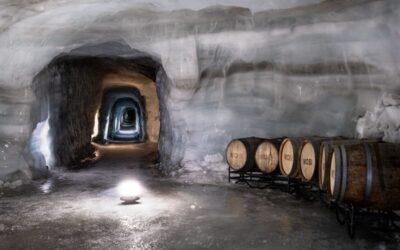
Excellent. Good to learn so much more about the artist Venu.
Thanks a lot Biju!
It’s unfair to comment on some one’s effort that too young artist like V Venugopal, he is doing extremely good in his own right and within the limitation of frame work and his capacity. I really enjoyed seeing glimpse of his few works and extend my sincere congratulations to him. I also would like to wish him all my best wishes for his future endeavours. All the best Venu keep going, believe in yourself that you are doing well. Thanks for sharing.
Thank you so much Bagodi sir, your words of appreciation means a lot!
Excellent presentation and very well articulated.
Congratulations and best of luck Venu 🙂
Thank you so much Hegde!